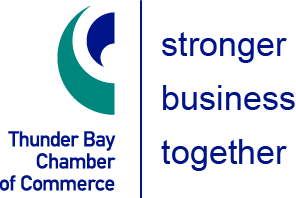ISSUE:
The lack of adequate infrastructure is the most significant obstacle to mining development in Canada.
Inadequate infrastructure has been the primary barrier to developing some of Canada’s most promising mineral discoveries. Greater investments in the necessary infrastructure is needed to help relieve the current financial burden of construction costs placed on mining companies and to unlock the vast potential of Canadian communities and mineral deposits.
BACKGROUND:
Large infrastructure projects have the potential to enrich the regional, provincial and federal economies. They improve accessibility and encourage diversification of the economy; however, the cost to establish the required infrastructure is frequently too prohibitive for private-sector investment alone.
Trade-enabling infrastructure, in particular transportation infrastructure, plays a critical role in Canada’s economic prosperity by enabling the movement of products, services and people to global markets. This is especially true in the mining sector. Mining is one of Canada’s most important economic sectors and is a major driver of the country’s prosperity. Mining contributed $97 billion to Canada’s Gross Domestic Product (GDP) in 2017 and employed 426,000 workers in the sectors of mineral extraction, processing and manufacturing, as well as indirectly employing an additional 208,000 people.1 It is an industry that stimulates and supports economic growth both in large urban centres and in remote rural communities, including numerous First Nations communities: mining is the largest private sector employer of Indigenous Canadians on a proportional basis.2
As outlined in the 2015 report Levelling the Playing Field, major mining projects often require significant investment in new infrastructure, which is vital to ensure that mining companies have the ability to find, extract and remove ores at a competitive cost.”3 Mineral deposits are often located hundreds or even thousands of kilometres from road, rail, energy and technology infrastructure; as a result, companies are often faced with costs in the order of hundreds of millions of dollars in order to simply access their mining claims. Despite the strong benefit these projects potentially provide to the regional, provincial and federal economies, the cost to establish the required infrastructure is frequently too prohibitive for private-sector investment alone.
One example of a significant mining opportunity with extensive infrastructure requirements is the so-called “Ring of Fire,” a mineral-rich region in northwestern Ontario that is estimated to generate billions in tax revenue and create more than 5,500 jobs within the first ten years of operation.4 However, the lack of any transportation or energy infrastructure in this 5,000-square-kilometre area is a serious impediment to its progress and any associated economic opportunities for the region’s First Nations communities.
Similar infrastructure challenges are faced by many key strategic mining areas throughout Canada, such as the need for additional rail capacity in the Labrador Trough, new road construction and hydroelectric generation in northern Quebec, as well as enhanced electrical transmission in northwestern British Columbia, and an all-season road into the NWT’s diamond-rich Slave Geologic Region. This kind of strategic investment must be part of the federal government’s approach to enabling crucial mining initiatives throughout Canada.
In addition to greater investment in key mining projects across the nation, better coordination of infrastructure spending is needed to make these investments effective. Infrastructure planning should be coordinated between all levels of government, industry, and local communities as well as other economic development projects to ensure synergies and the opportunity to multiply benefits amongst all groups.
This type of infrastructure planning for critical mining initiatives and community growth is also a key enabler of Canada’s international competitiveness. The development of large-scale projects such as the Canadian Pacific Railway and the St. Lawrence Seaway have historically been crucial factors in the success of Canada’s mining sector by providing vital transportation links to both foreign and domestic markets. In turn, the mining industry helps to support the development of infrastructure by acting as a source of demand for large projects, particularly in the transportation sector.
Infrastructure development into Canada’s remote areas is an economic benefit not just to the communities in those areas, but also helps support Canada’s burgeoning tourism sector. The federal government has marked tourism as a key priority and investments in infrastructure to make Canada’s remotest and most pristine tourist attractions accessible is key. Opening Canada’s remote areas will attract not only international visitors but also domestic travelers, and ultimately, will be greatly beneficial to Canada’s tourism economy.
For the reasons given above, the federal government’s support of these key infrastructure projects must be viewed as a vital investment in future jobs and long-term prosperity rather than an expense.
RECOMMENDATIONS:
The Canadian Chamber of Commerce urges the federal government to:
- Immediately establish enhanced funding partnerships and innovative funding models to invest in the transportation, energy, and information infrastructure (including the Geological Survey of Canada) necessary to work with the private sector, all levels of government and Indigenous peoples to promote mining sector growth and stimulate regional economic development; and
- Work with provincial/territorial government, private industry, and Indigenous communities to better coordinate infrastructure spending by aligning infrastructure planning with community and industry needs as well as other economic development projects.




